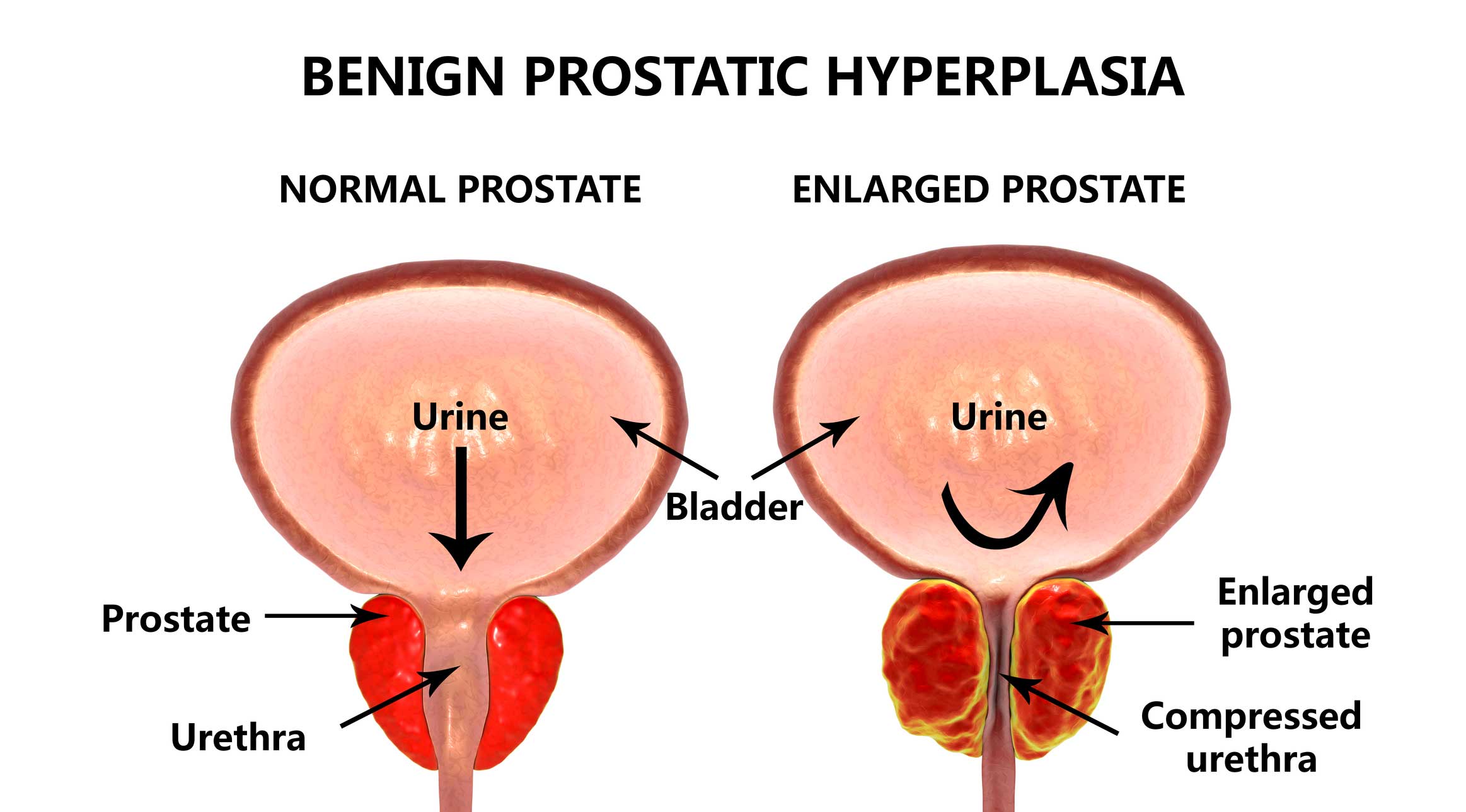The best thing about benign prostatic hypertrophy, an enlarged prostate? It’s unrelated to cancer. That’s a relief.
Now comes the daily nuisance created when an enlarged prostate blocks the urethra – abnormal urination that can overwhelm your day (or night).
When medication doesn’t work, doctors can choose from close to a dozen minimally invasive procedures to relieve pressure on the urethra and restore a more normal urination routine. UroLift, a new technology, opens a blocked urethra by lifting and pinning back prostate tissue with tiny implants. Sort of like tiebacks on a window curtain. UroLift, with no prostate tissue cut or removed – it’s the first benign prostate hypertrophy procedure that doesn’t remove tissue — also offers prospects of fewer sexual side effects than other procedures.
Read about a patient who had the UroLift procedure: Click here.
The Problem
The prostate, a walnut-shaped gland, is part of the male reproductive system that produces fluid for semen. It surrounds the urethra, a tubular duct that transports urine from the bladder out of the body. As men age, the prostate can become enlarged – though not cancerous – as part of a condition called benign prostatic hypertrophy. (The prostate actually has two growth periods. In puberty, the prostate’s size doubles. The second growth period begins about age 25 and extends through most of a man’s life.)
Studies suggest the prostate’s enlargement in older men is caused by decreased levels of active testosterone, a male hormone, in their blood. That leaves a higher percentage of estrogen – a female hormone that men produce in small quantities throughout their lives – in their blood, which can eventually promote prostate cell growth.
 The Symptoms
The Symptoms
More than 70 percent of men in their 60s or older experience some of these lower urinary tract symptoms attributed to benign prostatic hyperplasia:
- Frequent urination (eight or more times a day).
- Urgent feeling that you have to urinate.
- Weak or slow urinary stream.
- Dribbling at end of urination.
- Urinary stream that stops and starts.
- Difficulty or delay in starting urination.
- Urinary retention.
- A feeling that you cannot empty your bladder.
- Nocturia (frequent urination during sleep periods).
- Urinary incontinence.
- Urine with unusual color or smell.
How UroLift Works
UroLift, or prostatic urethral lift, is a minimally invasive surgical option for patients who qualify. It requires no hospital stay and no cutting, heating or removal of prostate tissue. Recovery is also quicker than the traditional transurethral resection (TURP) procedure.
The Procedure:
The UroLift device is placed through the penis via an obstructed urethra to access the enlarged prostate.
After the device compresses prostate tissue, tiny sutures lift and hold back prostate tissue. The device allows a urologist to squeeze the device’s trigger, sending a suture through the prostate that attaches to the outside of the walnut-size gland. The other end of the suture is cut, securing it inside the urethra.
The Urolift device is removed, leaving an opened urethra for improved urine flow.
Recovery
Most patients do not require a post-operative catheter. (About 20 percent will require a catheter overnight.)
Many patients report relief of their symptoms within two weeks. Common side effects may include light blood in the urine, some pain or discomfort when urinating, an increased urge to urinate and discomfort in the pelvis that typically resolve two to four weeks after the procedure. Talk to your doctor about how soon you can resume physical activities.
For more information about UroLift, visit the Tallwood Urology & Kidney Institute or call 1.877.247.7747.


